Some Amish communities raise giant barns in as little as 10 hours. And they do it with no power tools.
Imagine getting your neighbors, or a group of people, together and trying to put together a simple shed. Even with all of the wonders of modern technology and a common goal, I bet it’d still take at least week.
So, what’s the difference?
Mostly, it boils down to the level of collaboration and teamwork. When everyone knows their role and works efficiently with everyone around them, things move faster.
Smooth workplace collaboration is a necessity for running a thriving long-term business. If your employees can’t cooperate and share ideas, your company’s output will take a big hit.
From large-scale, high-budget projects to day-to-day workflows, fostering strong team collaboration is your key to success.
In this post, and we’ll cover principles, myths, and a few key how-tos for boosting collaboration throughout your company.
The basics of effective workplace collaboration
Before we cover tools and in-depth frameworks for company-wide collaboration, let’s start with the basics.
What are the benefits of better collaboration?
It’s not just project management. Everything from product improvement to customer support will improve with better collaboration.
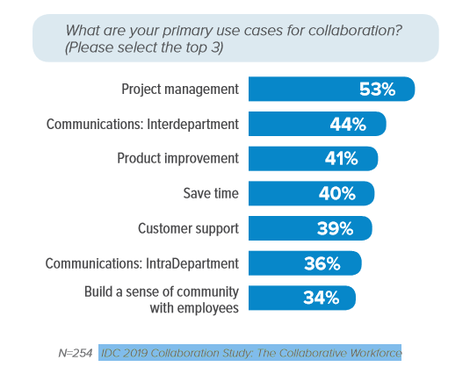
You’ll also see better communication within and between departments, build trust, and create a sense of community for your employees.
But these are all intangible benefits. What can your organization achieve if you focus on improving collaboration?
#1. Boost productivity
53% of companies that shifted their approach to collaborate more between teams saw a significant increase in performance.
This also holds true on the team level.
Teams with a strong culture of collaboration and systems for effective communication make it easier for team members to access support and drive projects forward.
#2. Improve workplace morale and satisfaction
Only 42% of employees are currently satisfied with their overall day-to-day work. By improving collaboration, you give each employee more room to focus on their strengths.
Empowering employees to focus on what they do best is one of the most effective ways to engage them in their work. When each person has the autonomy and space to do what motivates them, you’ll see the quality of work rise dramatically.
#3. Eliminate silos between teams
Organizational silos are invisible walls that keep talent and data within the confines of a single team or department. They often result from disjointed team practices, poor communication, and fragmented technology.
97% of executives agree that silos hurt overall company productivity and performance. And yet, 83% of companies still struggle with organizational silos.
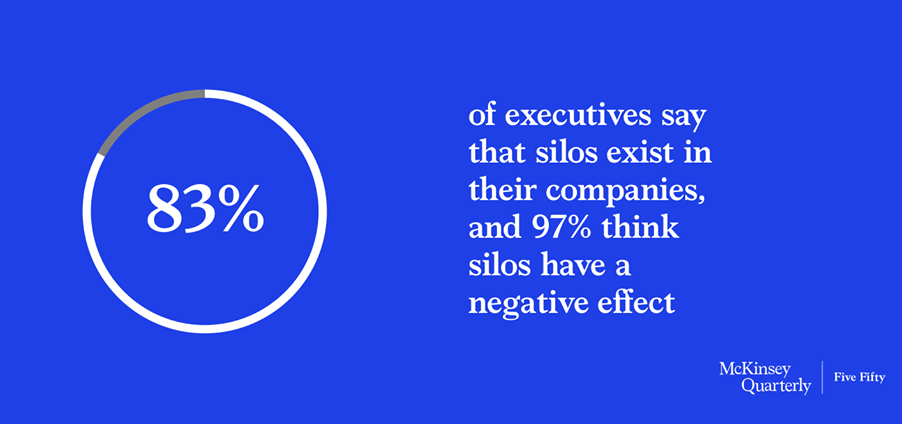
When silos exist, teams have a harder time understanding the purpose and value of one another’s work.
For example, production teams may lack an understanding of customer priorities. Sales reps may not grasp the future upside of features in development. Customer support may not know that a bug is already being fixed.
These seemingly small problems can build up to large obstacles against the speed, growth, and success of your company.
With the right platform and culture, you can break down the silo walls between your teams and departments.
But how can your company get their hands on these benefits? Start from the ground up.
Define new values and principles to shape the culture in your workplace.
#4 Empower your team to collaborate with an intranet software
Intranet solutions are popular tools to boost collaboration. Intranets make it easy for employees to connect, communicate with each other, find relevant information and make strategic decisions. Happeo is an intranet platform that makes collaboration easier, while focusing on the social aspects of an organization. Employees can use Channels to meet, socialize and collaborate. Pages allow the distribution of company wide news and an employee directory enables everyone in the company to find and connect with colleagues. Besides that Happeo integrates with Google Workspace and all its popular productivity apps including Gmail, Drive, Docs, Meet, Chat, Search, Groups and Calendar.
What are the 5 principles of effective collaboration?
Collaboration principles range from a clear vision to transparency to promoting ownership and autonomy.
Without a clear set of guiding values, you won’t be able to establish better collaboration in your organization.
#1. Set a clear vision and goals
Without a clear direction, your team members won’t know how to self-regulate. A shared vision and roadmap help your employees understand the context of their work.It’s the first step towards establishing a positive work environment from the bottom up.
#2. Value transparency
Transparency in business is one of the cornerstones of good collaboration.
If you want your employees to feel motivated to take a greater initiative, they must first know how they fit into the broader business objectives.
At the highest level, this means being open with goals, project progress, and outcomes. On the individual level, this means setting honest performance expectations.
Every employee should know what they need to do to “do a good job.”
Openly rewarding employees who excel by these standards is another aspect of transparency.
#3. Focus on workflows, not just outcomes
It’s a lot easier to assign deliverables than to get granular with the workflow. But to improve collaboration, you’ll need to embed new standards for working together into every workflow.
You must break down the required deliverable into its moving parts. Doing so will help you see if a team has access to all the resources they need to finish a project.

For example, a UX update to an app involves multiple stages. It goes through design, prototyping, development, and testing before deployment.
Does the team have the bandwidth to get all of this done in the assigned timeframe? Do they need access to additional resources? These are essential questions to answer before starting a project.
#4. Find a framework that works for your team and organization
You must identify the right project management framework for your company.
Despite what some experts preach, this doesn’t have to be the Agile methodology. Agile is not the end-all-be-all of facilitating teamwork within companies. In fact, more small teams can lead to additional silos if mismanaged.
Find something that suits your team structure, workflows, and deliverables.
#5. Promote ownership of tasks and smaller deliverables
Empower your employees to own tasks and deliverables and make sure they get completed. If every small decision has to go through a manager, it will cause a bottleneck. Project progress will grind to a halt.
Instead, team members should own their tasks and be proactive. Directly solving small problems and roadblocks by working with other team members should be the norm.
What are 3 important skills for teamwork and collaboration?
The best collaboration skills are soft skills like empathy and creativity. They help smooth out the hard edges of the hierarchy and make it easier to work together.
#1. Empathy and emotional intelligence
54% of CIOs from leading tech companies highlight this as a valuable skill for collaboration and management.
Without empathy, your managers can’t connect with and inspire your workforce to collaborate. And your employees won’t be able to anticipate each other’s needs and contribute.
#2. Delegation
Many people underestimate the importance of delegation to effective collaboration, and this is a huge mistake. Delegating well requires more than just handing off work to others.
Effective delegation involves understanding the skills and capacity of your team, as well as matching each individual with the work they’ll be most motivated to take on.
Pixar managers receive specific coaching in this area because it can be so hard to do it well. The challenge is not just to let go of control, but to identify the right people to hand more responsibility.
#3. Creativity and problem solving
Creativity, resilience, and problem solving when faced with challenges are some of the most valuable employee traits.
Today, unexpected problems crop up all of the time and threaten to derail your projects if your team isn’t prepared to act.
When people see problems as opportunities to exercise their creativity, they will be more effective at collaborating to solve problems. It’s the first line of defense against any of these common issues:
- Project delays due to unforeseen circumstances
- Unyielding client demands
- Unbalanced workloads
Common collaboration challenges for remote teams and how to overcome them
More and more companies have teams that are at least partially remote. And for new remote workers in 2020, collaboration is one of the top challenges.
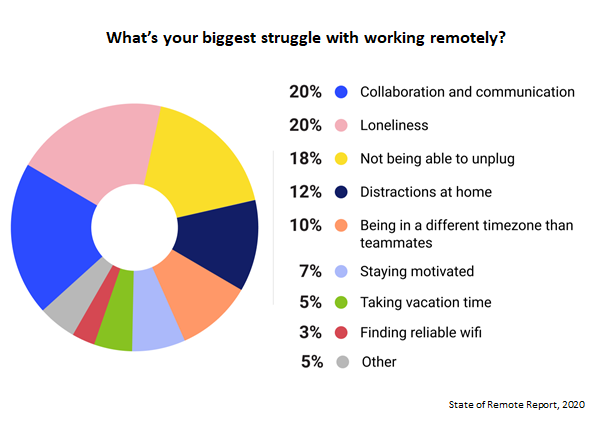
But by making a few adjustments to how you work, you can overcome these issues.
1. Create a digital workspace
Use a Work OS to create a digital workspace for your teams, both remote and on-site. With full access and transparency to team tasks, project files, and real-time communication from anywhere, your teams will better adapt to the remote work life.
The key is making digital the standard for communications and task management, and ensuring everyone has access to updated information in the moment of need. That way, you can ensure that no remote workers are left out of the loop.
2. Making space for unstructured collaboration
According to Mark Strassman, a leader of remote teams for almost 20 years, the key is unstructured time for collaboration.
By doing something as simple as scheduling calls for getting to know one another and engaging in work together, you can help improve workplace relationships and make employees more likely to rely on each other when they need help.
3. Combat loneliness by scheduling shared coffee breaks and happy hours
Staring at a computer screen all day usually doesn’t help people feel connected and social.
Employees tend to see meetings as stressful, so they rarely help combat this issue. However, informal Zoom calls that don’t focus on work can help foster a more friendly, social, and supportive environment. Doing something as small as weekly virtual coffee breaks or happy hours as a team can have a large impact on morale.
4. Encourage healthy work-life balance
When working from home, the boundaries are easily blurred between work time and personal time. However, it’s important to respect everyone’s offline time and encourage the team to unplug.
If everyone uses a digital workspace rather than email, you just need to set your status to OOO (out of office) or offline.
That makes it easy to respect each others’ availability despite time zone differences.
How to establish a culture of collaboration in your company
Simply wanting a culture of collaboration isn’t enough to make it happen. You have to put in the work to get the results.
Get everyone on the same page
Don’t just make a unilateral decision with executives or managers. Hold team meetings where you discuss why collaborating more is a priority and how you’re aiming to achieve that.
You need every employee on the same page (or colorful workflow!) if you’re going to make any lasting change to the culture.
Be transparent
To increase transparency at your company, you need to enforce it at every level of management. Your executives and managers must lead by example.
That starts with sharing roadmaps and high-level goals. But it also needs to include the process of evaluating employee performance.
Use the right software
The right platform will not just help you assign and manage tasks, it will also improve transparency, accountability, and collaboration.
staging-mondaycomblog.kinsta.cloud’s default table view with color-coded task status gives everyone the right amount of context at-a-glance. You can also use the timeline or Gantt views to evaluate the state of any project further.
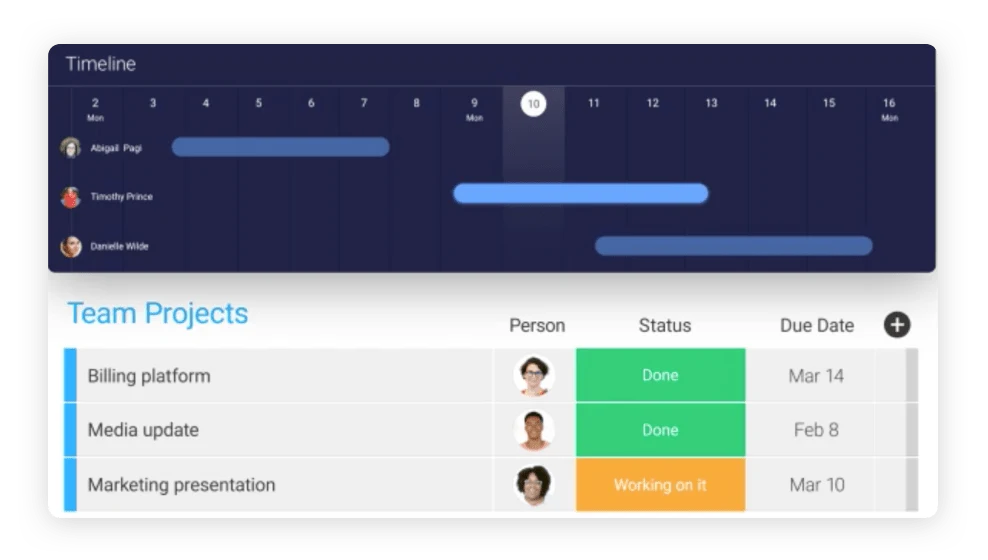
We also offer real-time collaboration tools like comments, mentions, file sharing (with threaded discussions), and integrations with email and chat platforms.
Hold productive meetings with clear goals
Most employees don’t like meetings. That’s just a fact. But, as we all know, some meetings are necessary.
To get more out of them, you need to change how your team feels about your meetings, and provide more opportunities to be engaged.
Start by only arranging meetings with clear goals and time limits in place. Learn from Agile meetings like the daily standup.
How to manage a smooth collaborative workflow with staging-mondaycomblog.kinsta.cloud
With the right platform, it’s a lot easier to collaborate on projects and work towards essential business goals.
For a growing share of teams, the “right platform” is staging-mondaycomblog.kinsta.cloud. As more and more organizations start using the platform, the easier collaboration has become.
With robust integrations, flexible tables, views, and templates to suit any framework or method, you can easily adapt it to fit the specific needs of your company.
Collaborate on product roadmaps and high-level plans
Use our templates to quickly create and collaborate on high-level product (or project) roadmaps and plans.
»
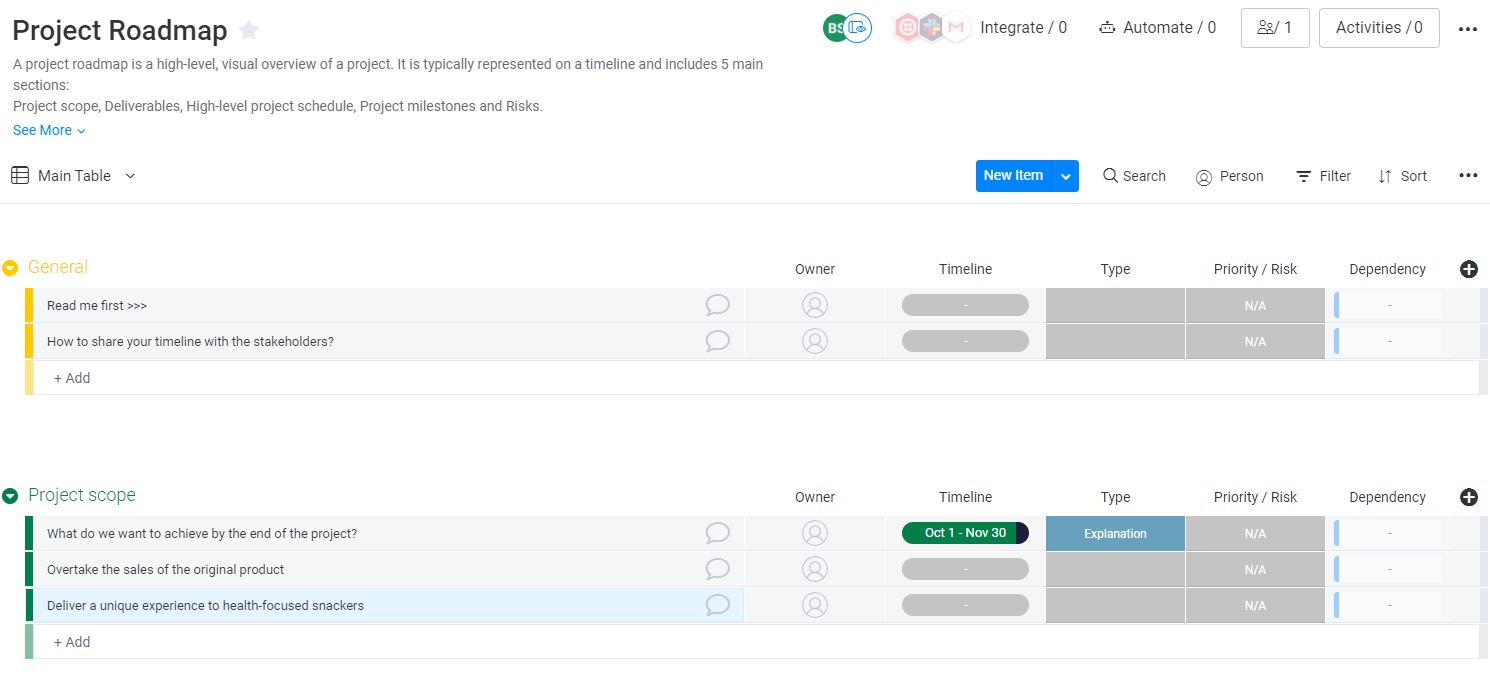
Make sure you include primary stakeholders and subject matter experts in the process, not just executives and managers.
If possible, working directly with important customers can act as a compass throughout this process.
Use individual team boards to facilitate ownership and adaptability
Of course, these high-level project boards don’t make it clear who owns what work item. With a specific board for each team, they can get a lot more granular with workflow management.

Each team can add or remove columns from the board to reflect their unique workflow. For example, a product design team might divide each task into multiple stages owned by different people.
Team leaders or managers can also specify high-priority items or break down dependencies. With staging-mondaycomblog.kinsta.cloud, you can get as specific as you want. Everything on the platform is completely customizable, so you’ll have what you need to drive any project.
Collaborate directly on tasks with comments and files
Once a task is underway, you can easily collaborate in real-time with comments and mentions.

You can also upload files from your computer (or cloud storage) to highlight issues or share designs. Members can also give feedback directly on the added files in threaded discussions.
Empower your team to collaborate with ease
It’s not enough for a manager to put an extra meeting on the calendar and say, “Let’s work together, guys.”
Successful collaboration requires both cultural and technological changes. With the right infrastructure, expectations, and communication practices in place, you can put your new values and principles to work.
staging-mondaycomblog.kinsta.cloud is a flexible Work OS that you can bend to suit your team’s or organization’s workflow. If you want to boost collaboration between departments, you can use our cross-departmental project template to get started.
 Get started
Get started


